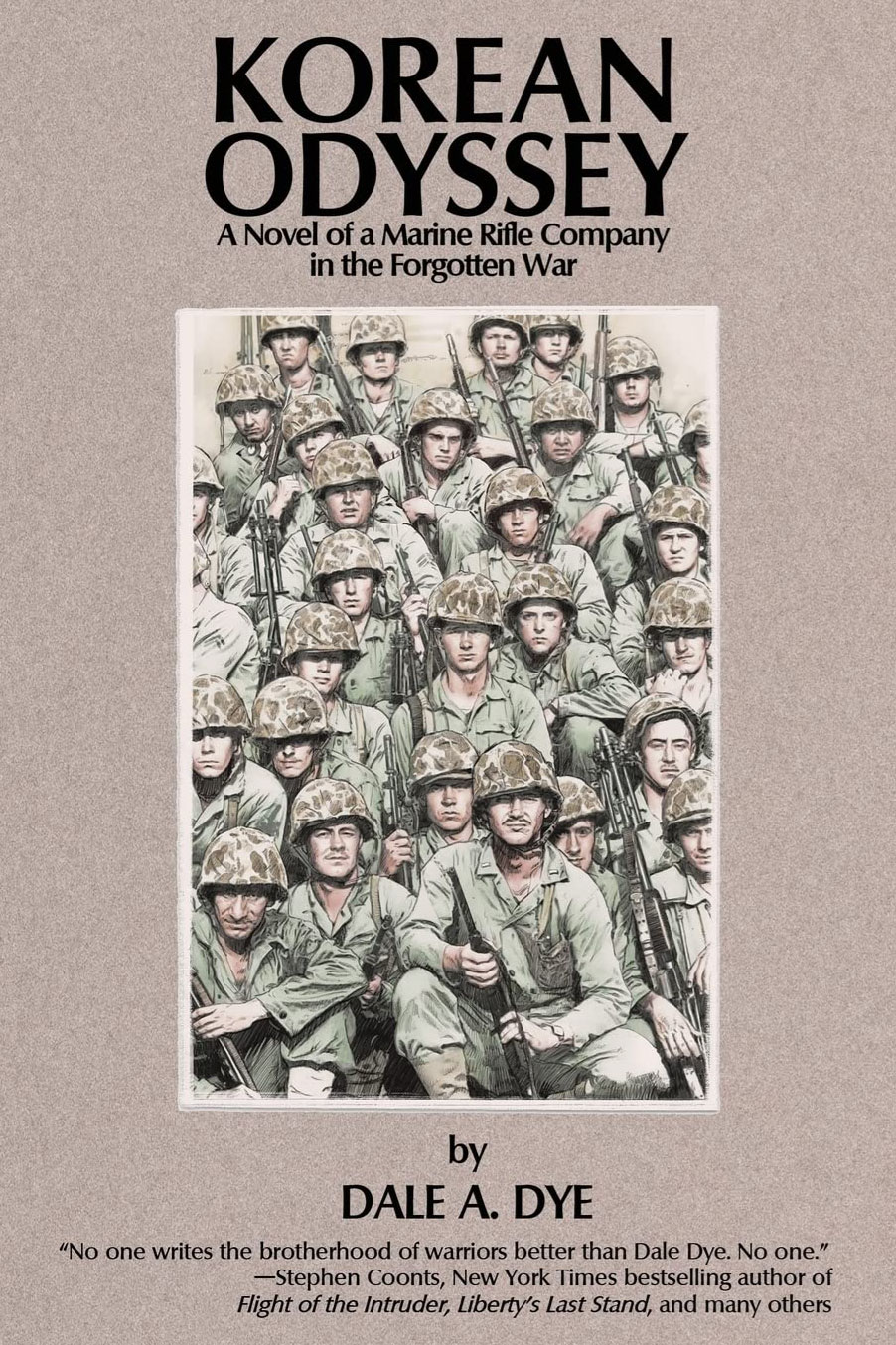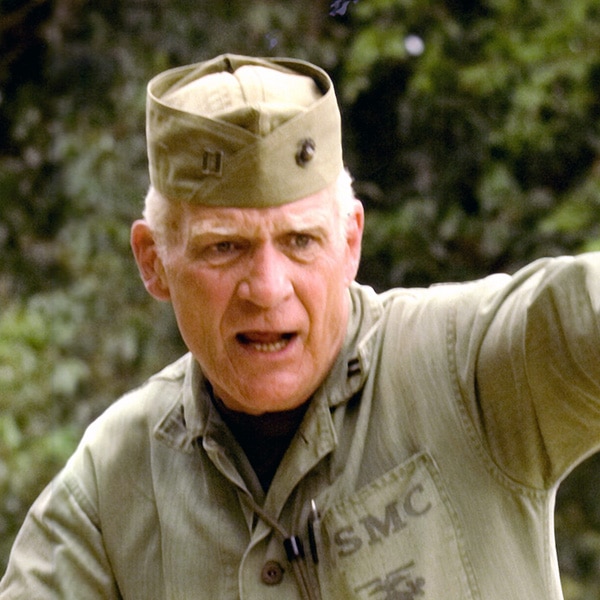Battle of Chosin Reservoir: One Marine’s Survival Story
May 7th, 2024
9 minute read
The Battle of Chosin Reservoir was one of the most brutal battles of the Korean War. In November and December of 1950, the massively outnumbered United Nations forces fought both frigid weather and the attacking People’s Volunteer Army. Chinese troops outnumbered the Allied forces — for every one U.N. soldier or Marine, there were four attacking them from China. In this article, Capt. Dale A. Dye, U.S.M.C. (ret.) tells the tale of one Marine on the front line of this pivotal engagement.
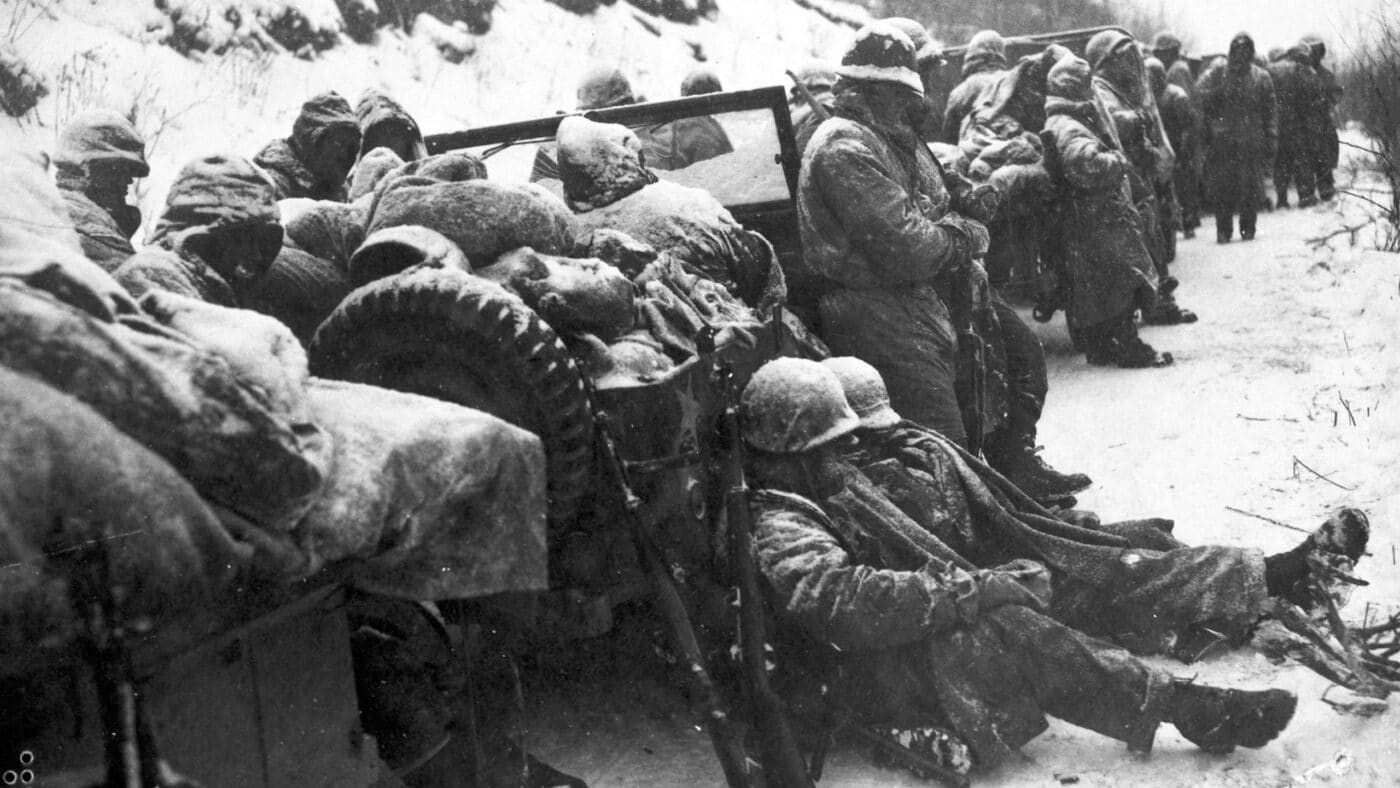
While he later became one of my closest friends, my first encounter with Barry Jones got off to a rocky start. He was introduced as a retired L.A. Sheriff’s Department homicide detective. Fine … but I was focused on the eagle, globe and anchor lapel pin he was wearing. The ritual began as it generally does among two Marines meeting for the first time.
“Marine Corps, huh?”
“Yeah…”
“Me too. Where’d you go to boot camp?”
“Korea…”
Red flags rose and I arched an eyebrow. “No. I mean where did you go through basic training? Parris Island or San Diego?”
“I never went to boot camp. I just went to Korea.”
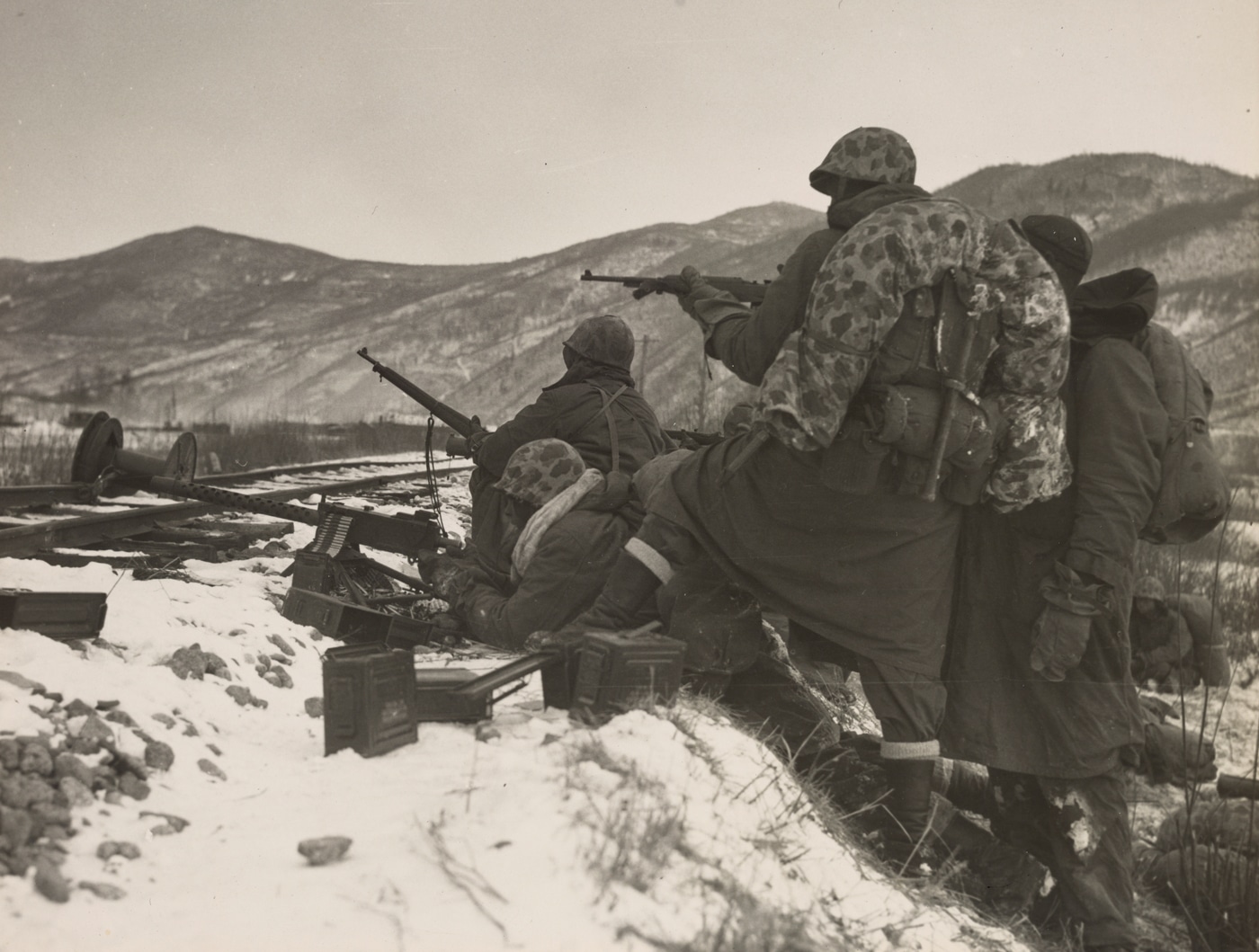
It took a couple more hours and several more beers, but I finally got the rest of Barry’s story, and it was a jolt to a two-decade Mustang who thought all Marines were born at one of the two recruit depots, regardless of contrary indications on a birth certificate.
His Path
Mainly to earn a little pocket money and avoid the draft into the active Army, Barry Jones found a Marine Corps Reserve unit near his Pittsburgh hometown and joined in 1949. He was along on the unit’s two-week summer training session at Camp Lejeune, NC, but admittedly didn’t know much about the Marine Corps, its weapons or how it fights when the unit got orders to activate in preparation for deployment to Korea. He asked about boot camp, but was told it would all get ironed out when his unit reached Camp Pendleton.
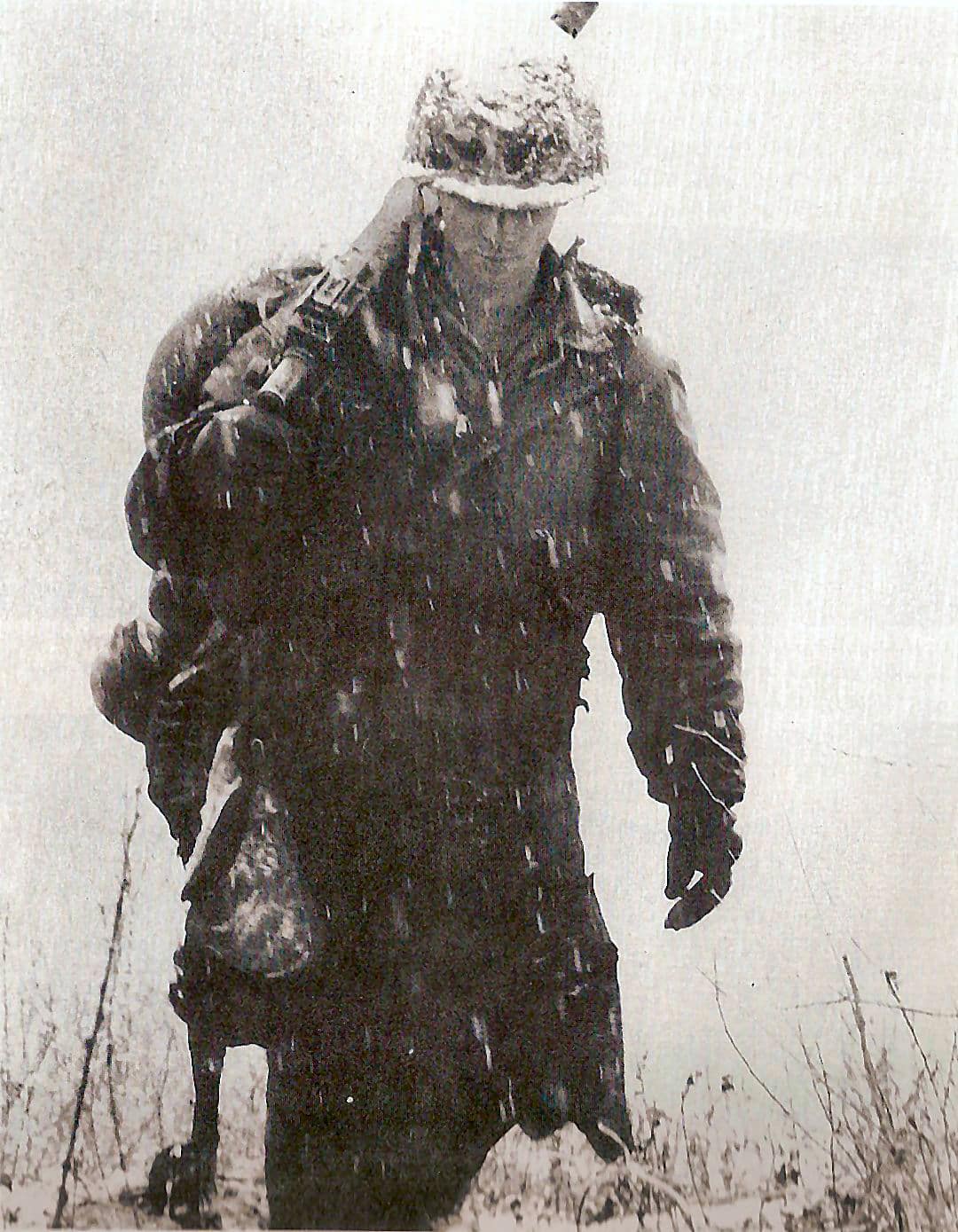
It was a zoo out there in the summer of 1950, Barry remembered, with elements of the 1st Marine Brigade being slapped together with any available warm bodies. Without even realizing there was such a thing, he found himself assigned as a rifleman in Fox Company of the newly constructed 7th Marines.
Officers and senior NCOs assured him he’d get help from old salts in the unit, but that didn’t keep him from feeling on the downside of combat-ready when he found himself crammed aboard an amphib on his way to Korea.
As it turned out when I did some research, Barry Jones wasn’t the only one in the slapdash units bound for Pusan that went without the formative boot camp experience.
“It was your basic OJT situation,” Barry told me. “Motivation we had. Training we did not.”
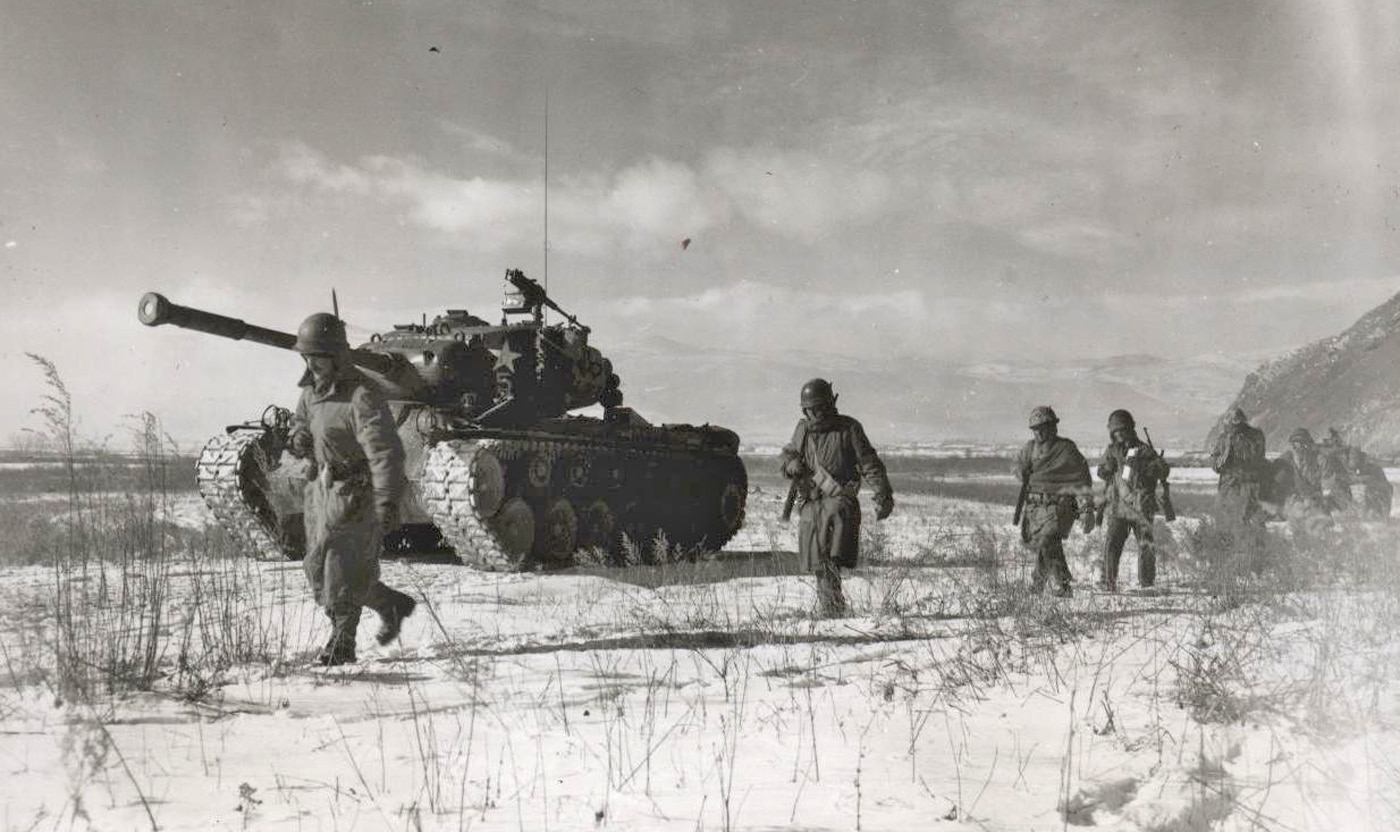
That says a lot for the element of motivation in a combat unit, and Barry relied on it — plus advice from enlisted leaders — as he fought through battles at the Pusan Perimeter and the Naktong Bulge. He was crewed up on an M1919A4 .30 caliber machine gun when one of the worst winters in Korea’s history hit and the 1st Marine Division was tasked with chasing the NKPA back across the 38th Parallel.
Winter combat gear — such as it was in 1950 — was issued and the division began a torturous slog up a long, winding road toward a place called Yudam-ni in the face of blowing snow and frigid winds. It was just west of a frozen body of water marked on maps as the Chosin Reservoir.
Barry Jones, along with the others in his unit, just tried to keep from freezing and put one leaden waterproof boot in front of the other.
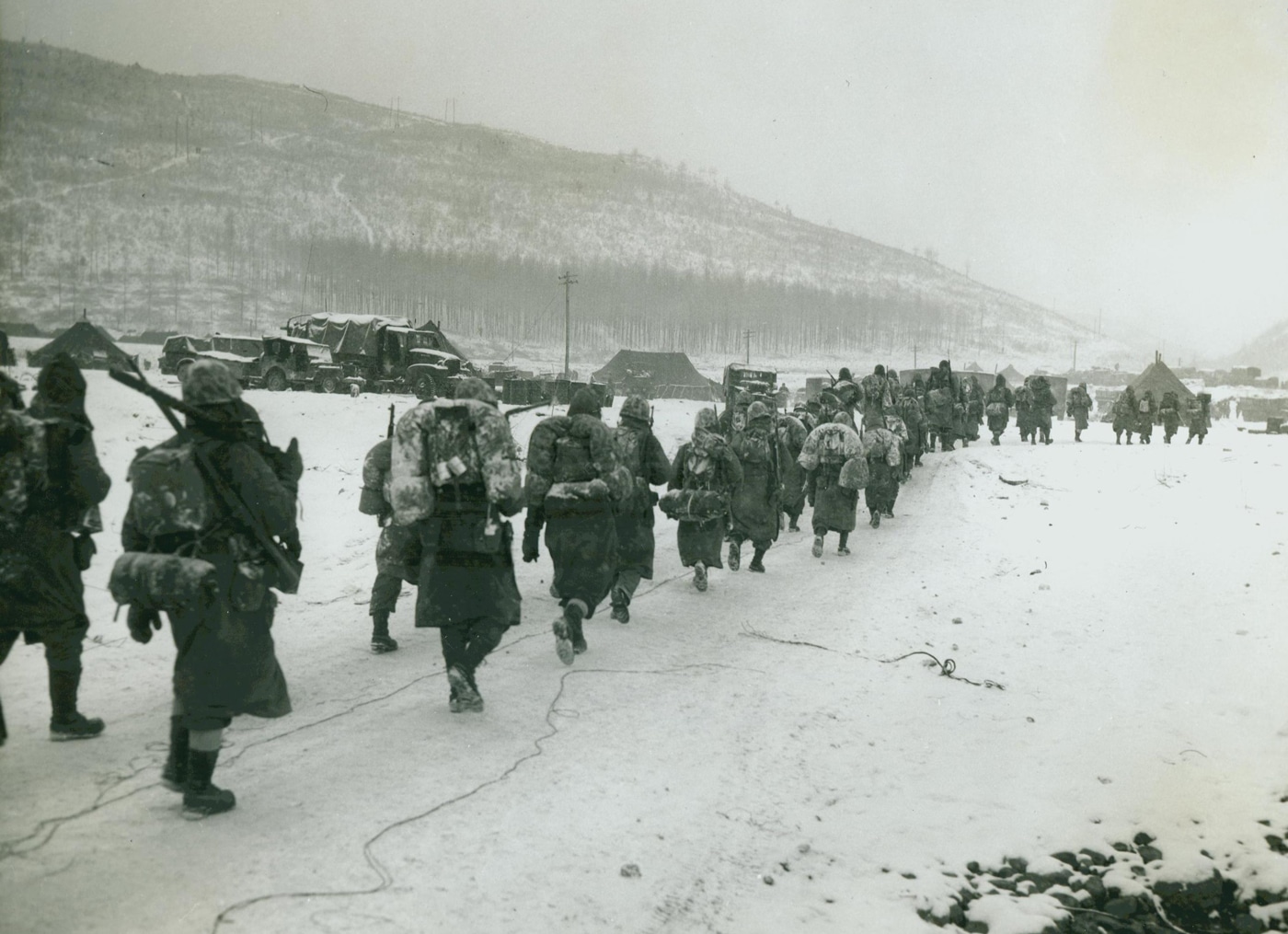
“We called ‘em Mickey Mouse boots,” Barry recalled. “Big clumsy things like we’d seen on cartoon characters. They seemed to weigh a ton, but they kept your feet from freezing if you remembered to change socks regularly.”
Snow and freezing temperatures that often dropped to 40 degrees below zero were the major enemies on the march to the Chosin Reservoir as the 1st Marine Division pushed steadily northward. And then the Chinese communist army swarmed across the Yalu to surround and attack the U.N. forces, which included the Marines and the Army’s 3rd and 7th Infantry Divisions, all pushing northward.
Barry showed me a copy of a “Stars & Stripes” newspaper he’d saved from sometime in December 1950. A headline said “Chinese Hordes Attacks U.N. Forces”. “Hard telling at the time how many … are in a basic horde,” Barry chuckled.
The count by observers at the time was something around 60,000 Red Chinese troops, rapidly occupying the high ground above all the Marine camps along the snow-covered road to the Chosin Reservoir.
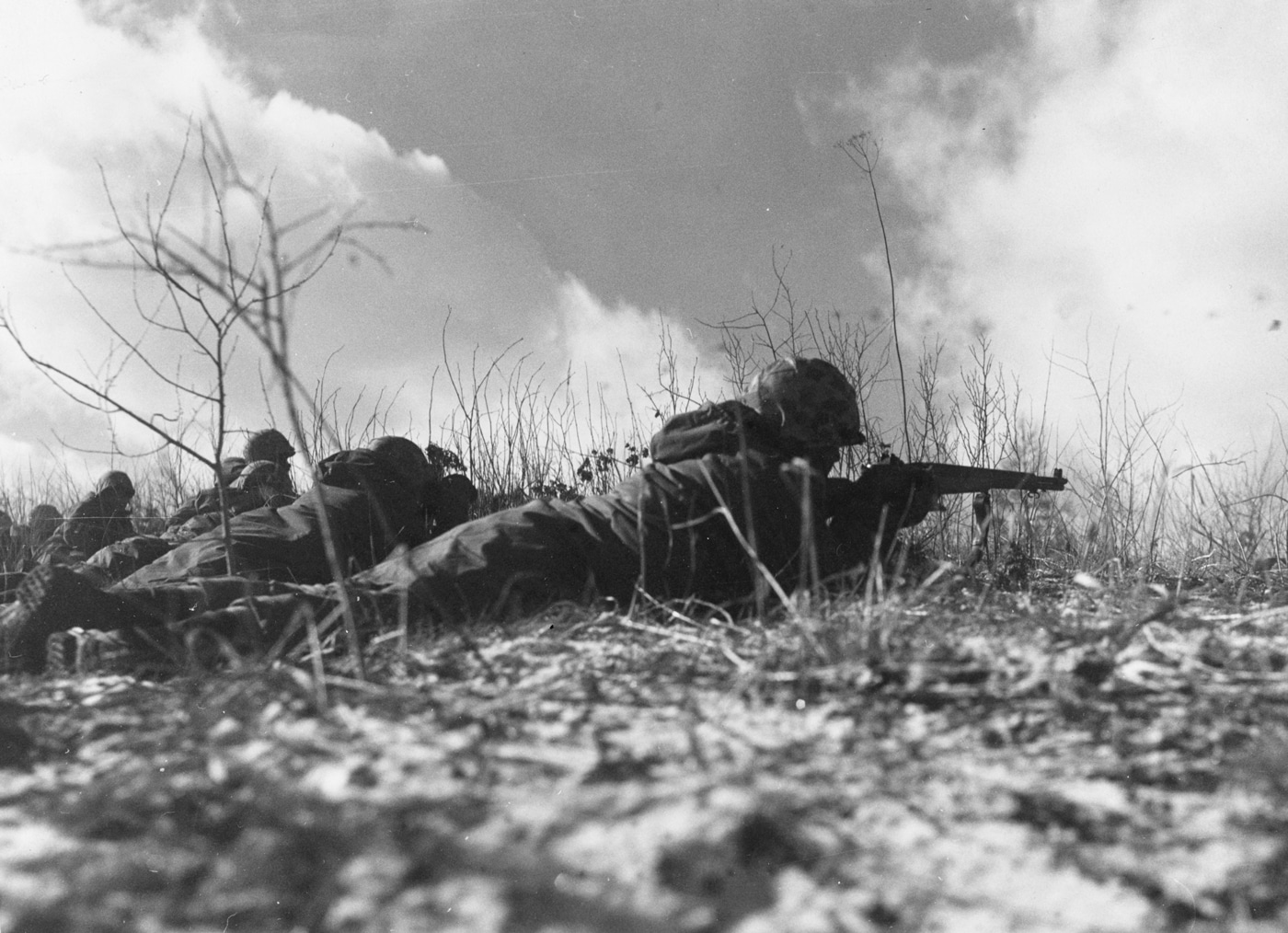
None of the troops involved knew it at the time, but they were involved in one of the pivotal battles of the Korean War. They mainly just referred to it as the Frozen Chosin in the Freezin’ Season.
The Battle
The U.N. forces involved had been caught by surprise and would have to fight their way out of a trap during a brutal 17-day battle. As the Marines did an about-face and headed away from the Chosin back the way they came, the press was calling it a massive retreat. The Marines simply said they were attacking in another direction.
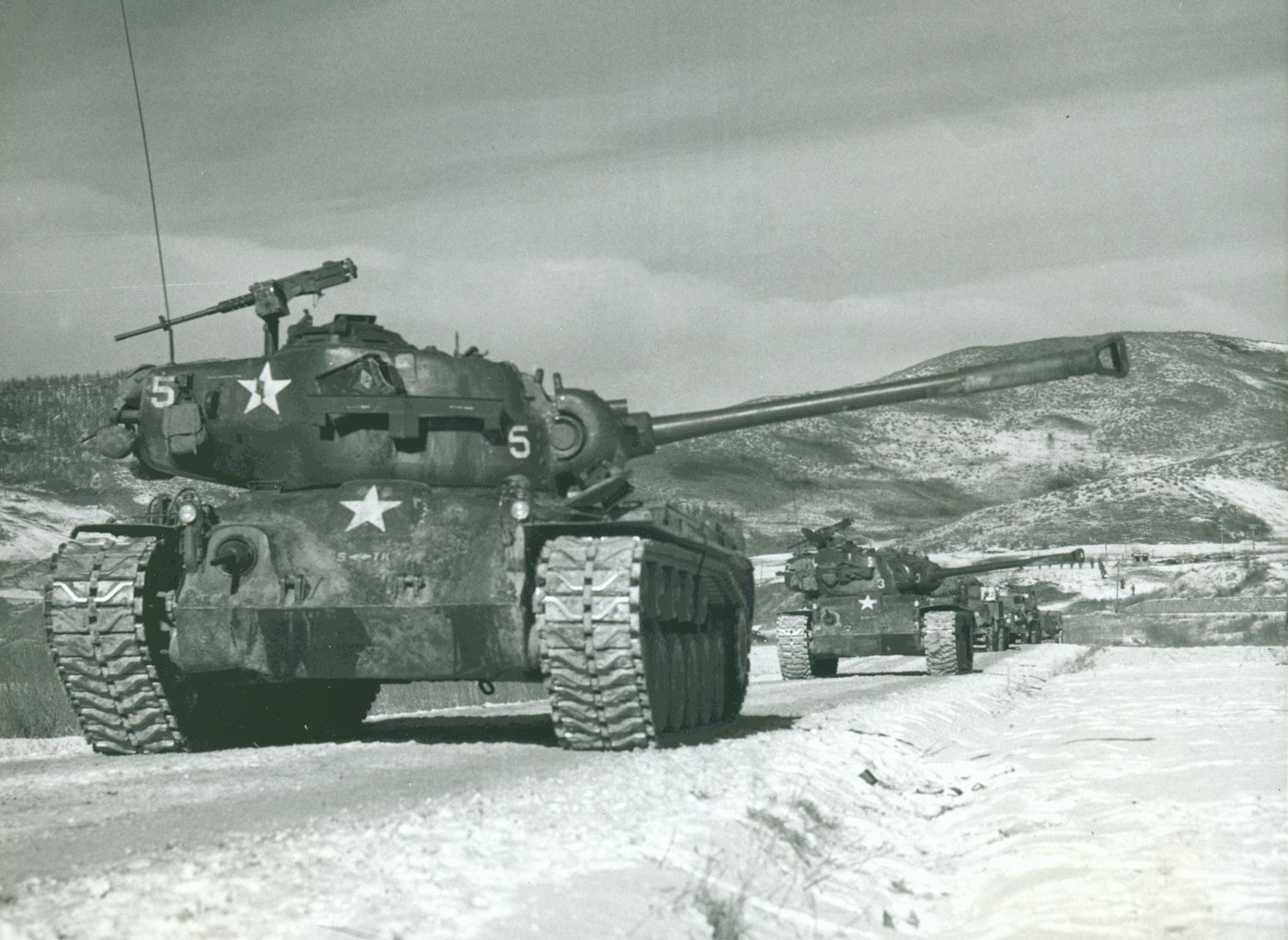
Barry Jones survived it all, despite some nasty shrapnel wounds and a couple of badly frozen toes. It was often difficult to get him to talk about some of the battles his unit fought on the way back to Wonsan staying just ahead of pursuing Chinese forces.
Very often, we’d review something written about the campaign and he’d just shrug indicating he wasn’t aware of the big picture at the time. He had a rifleman’s perspective, which was often narrow and limited to what he could see happening right in front of him. “Didn’t know it was anything but a miserable fight in shitty weather until I started to read about it long after the war in Korea was over.”
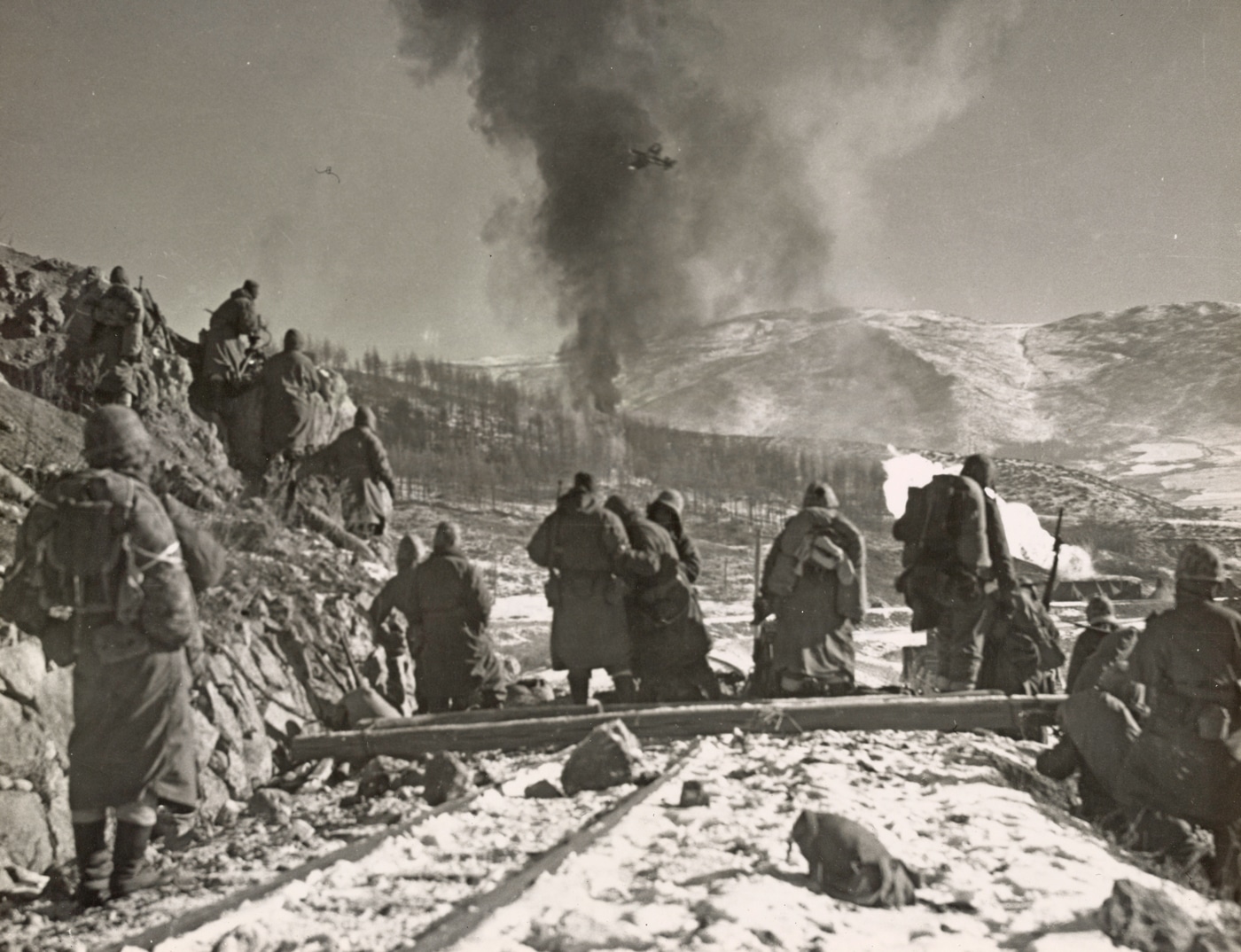
These days there is a dwindling number of survivors of the Chosin Reservoir campaign who organized and call themselves The Chosin Few. Barry introduced me to several of them and their stories prompted me to write a book titled “Korean Odyssey: A novel of a Marine rifle company in the Forgotten War.”
Barry Jones died in 2011 before I could finish the book, but the process of writing had me reviewing many of the notes from my time with him. He had a lot to say about weapons at the rifle platoon level and I thought modern readers in this forum who follow weapons of war — old and new — might enjoy some of his comments.
Weapons Maintenance
“We found out in a hurry that grease or any other kind of lubricant on weapons in that kind of cold spelled trouble. Didn’t matter what we used. Any kind of oil or grease was asking for frost-lock. We used gasoline to clean ‘em right down to bare metal and kept ‘em dry.
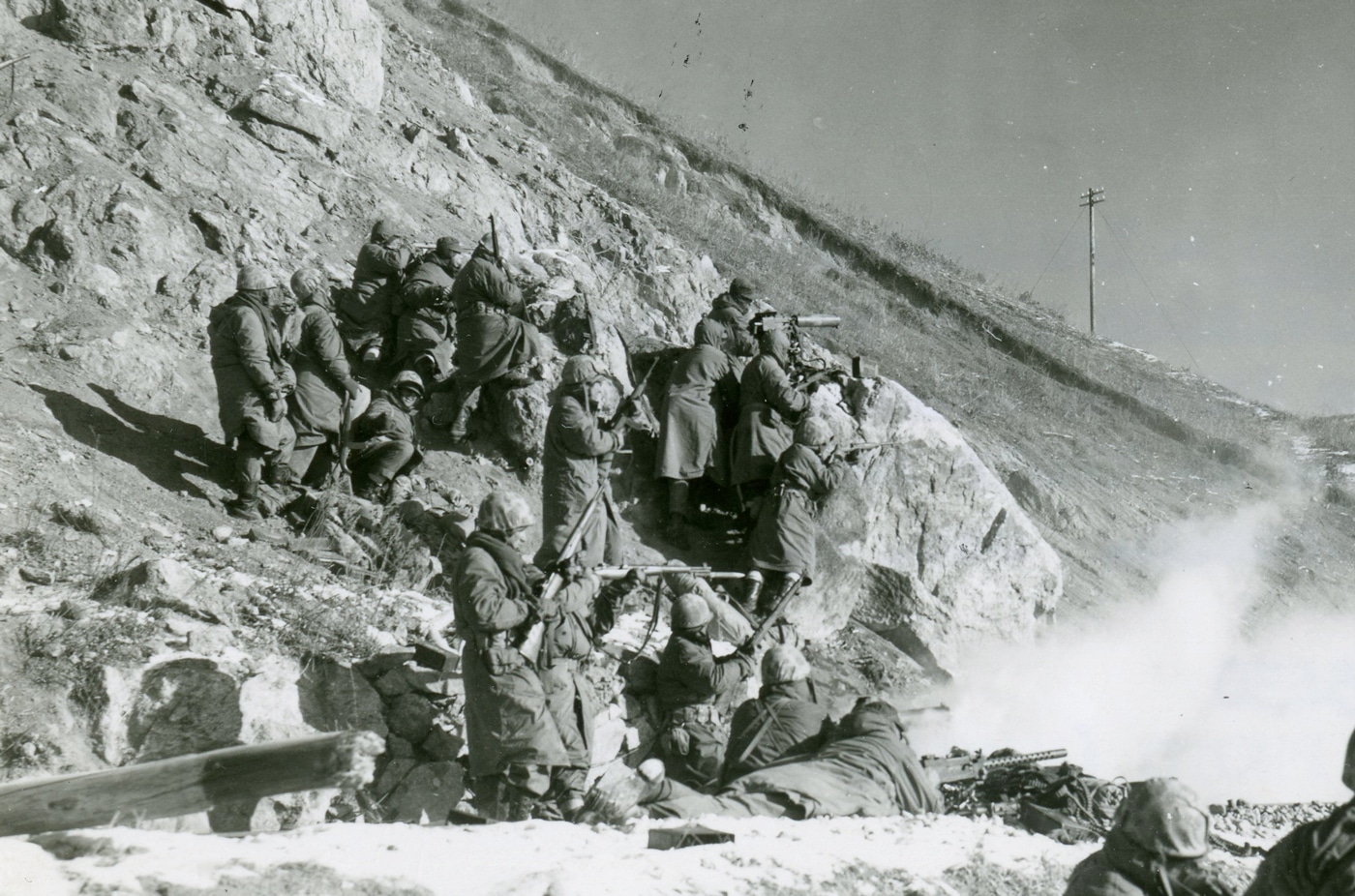
“We did a lot of test firing with all weapons even when we didn’t have anything particular to shoot at. You just wanted to warm ‘em up and be sure they worked in that cold. We had trucks and other vehicles carrying ammo nearby so it wasn’t a matter of conserving ammo.”
M1911A1 Pistol
“I got one when they made me a machine gunner. When things got really bad after the Chinese came in, I started thinking I might actually have to use the thing, so I cleaned it up really well and wrapped it in some plastic to keep it relatively dry. I’d burn a few rounds through it every once in a while to keep it exercised.”
M1/M2 Carbine
“Before I got assigned to machine guns, I carried an M1 Carbine for a while. They had a few of the M2’s that had a full-auto selector and a bigger magazine, but I only had the 15-round M1.
It was OK for ranges under about a hundred yards. Not much good beyond that.
Lots of guys bitched about it being underpowered, but I didn’t think so. I think they shot some Chinese wearing those big, padded overcoats and the round just blew through without hitting anything vital.”
Hand Grenades
“Carried a lot of them and used a lot of them. We tended to carry them inside our parkas and jackets. When it got really cold, frost could build up around the detonators.
We had to wear gloves all the time, so getting a grip on the pin was sometime hard. And no, we didn’t try to pull a grenade pin with our teeth. Saw a lot of guys that would hook the pin on the stacking swivel of their M-1 and use that to pull the pin.”
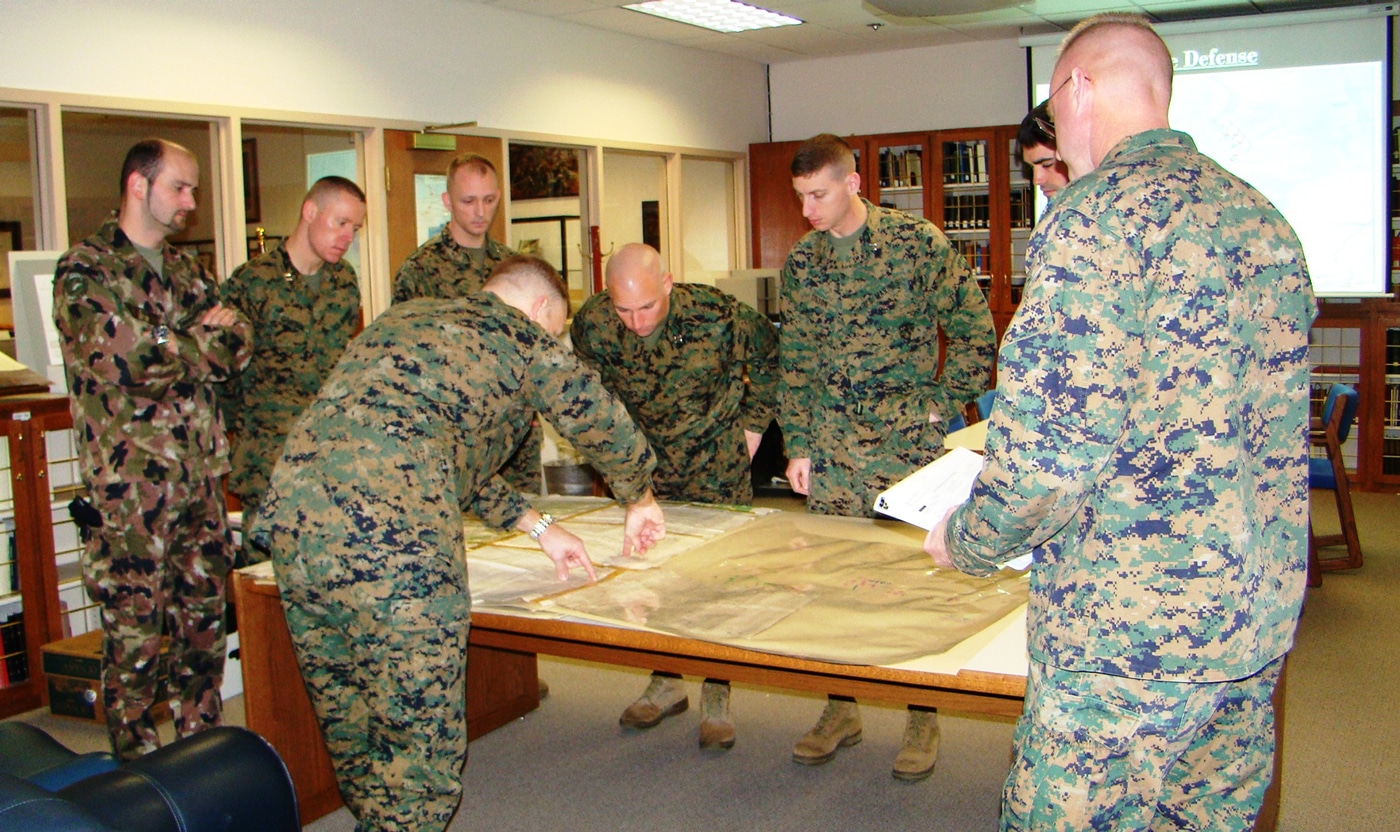
M1919A4 Machine Gun
“The air-cooled .30 was a blessing for us. We had the water-cooled version in the inventory somewhere, but it was practically useless in that kind of cold. I heard about gunners using antifreeze in the water jackets and stuff like that, but for the most part we relied on the air-cooled machinegun for fire support or to engage Chinese bouncing around up on the hilltops. It weighed about 30 pounds…a little over 40 with the tripod…but you stopped bitching about that after a while. That machine gun was worth every pound of weight.
“Mostly the ammo came up in cans … 250 rounds in a fabric belt … and you didn’t want to mess around trying to reload a belt in the cold with gloves on, so we always tried to have extra ammo distributed around the platoon.
Guys complained about the extra weight until they needed that gun in support.”
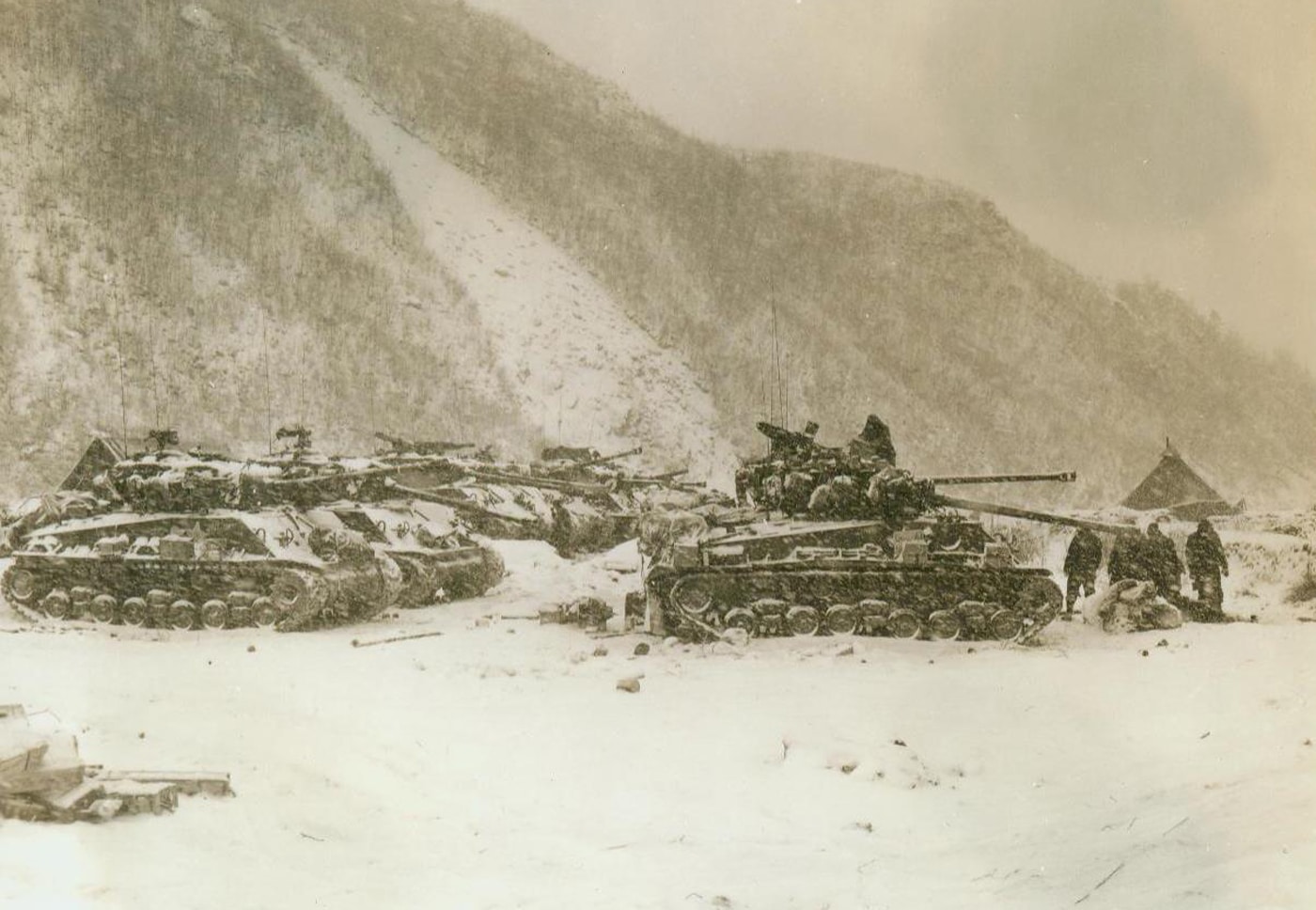
Browning Automatic Rifle
“We always had more of them than we rated. Good weapon even in the cold with all the moving parts if you kept it dry. They could get cranky and I saw some BAR men pissing on the action trying to get frozen parts moving. Not sure how effective it was. I know it was a bitch getting to your business with all the layers of clothes we were wearing.”
M1 Rifle
“That was the war-winner, old reliable. The M1 was tough, very rugged and reliable — even in really cold weather. Something about the design just made it durable, even in the worst conditions.
If you kept it dry, you didn’t have to worry about frost-lock. If the rifle did lock up for some reason, a swift kick on the operating rod generally took care of it.
Of course, it loaded from that eight-round clip, so reloading in a hurry with thick gloves on was a chore. You’d see guys all the time ripping a part of their glove out of the chamber when they reloaded but we all eventually got handy with it.”
Final Thoughts
That’s a little taste of the way it was for guys on the pointy-end of a frozen bayonet during the Chosin Reservoir campaign Nov-Dec 1950.
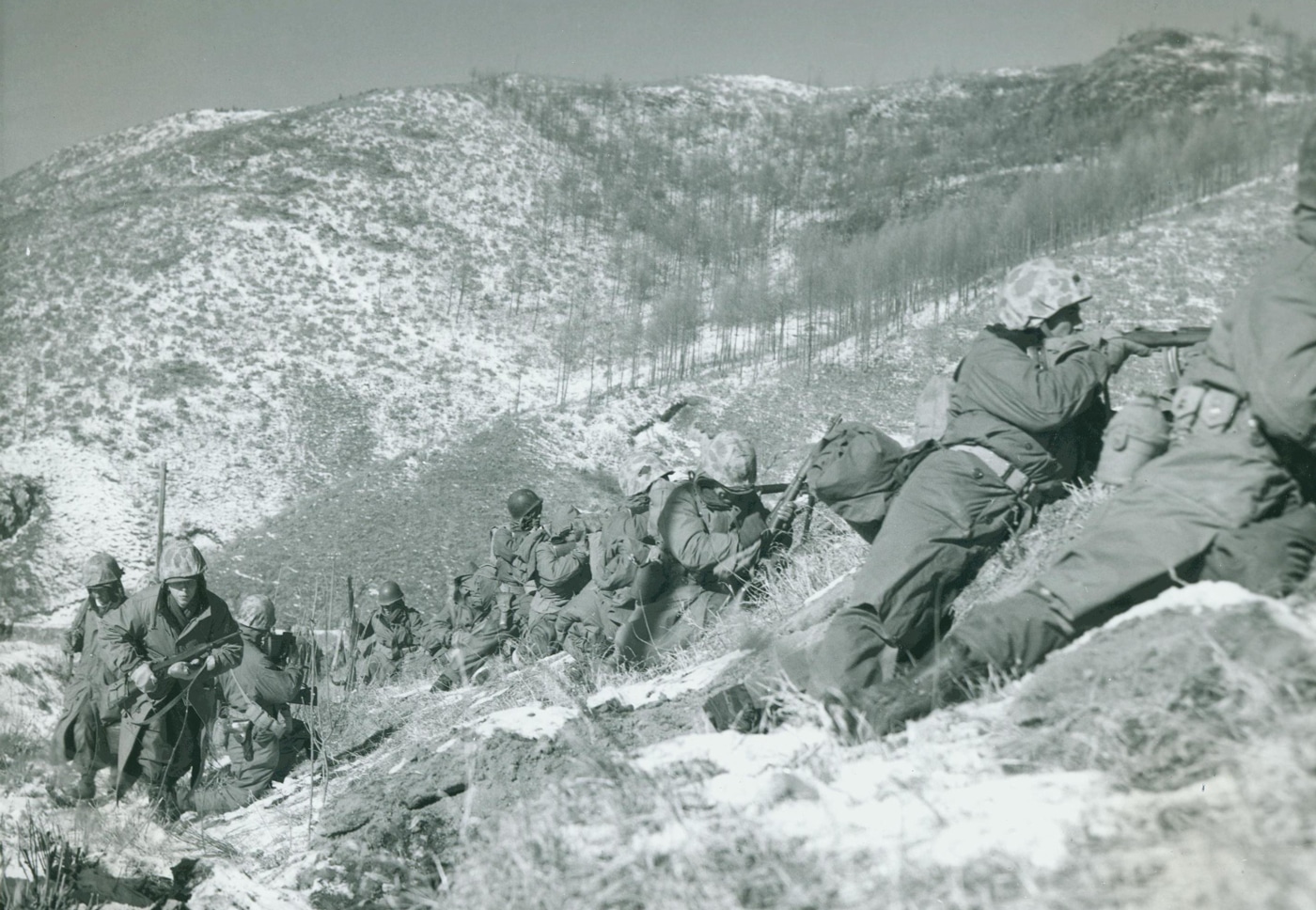
The Chinese considered the retreat of U.N. forces a success, but it was a Pyrrhic victory at best. In the final accounting, they suffered more than three times the number of Americans lost in that fight.
Men like Barry Jones sucked it up and drove on until the bitter stalemate three years later. A few of those men were still on active duty when I enlisted. They were revered and insightful instructors who prepared me well for my own combat crucible in Vietnam.
Editor’s Note: Please be sure to check out The Armory Life Forum, where you can comment about our daily articles, as well as just talk guns and gear. Click the “Go To Forum Thread” link below to jump in and discuss this article and much more!
Join the Discussion
Featured in this article
Continue Reading
Did you enjoy this article?

 736
736




